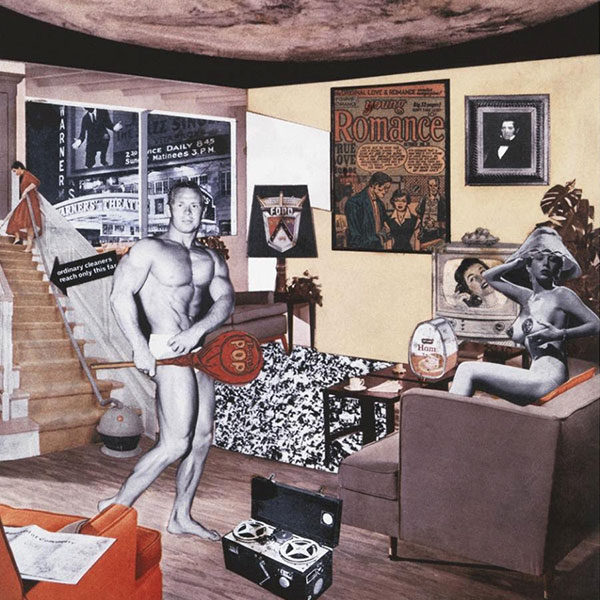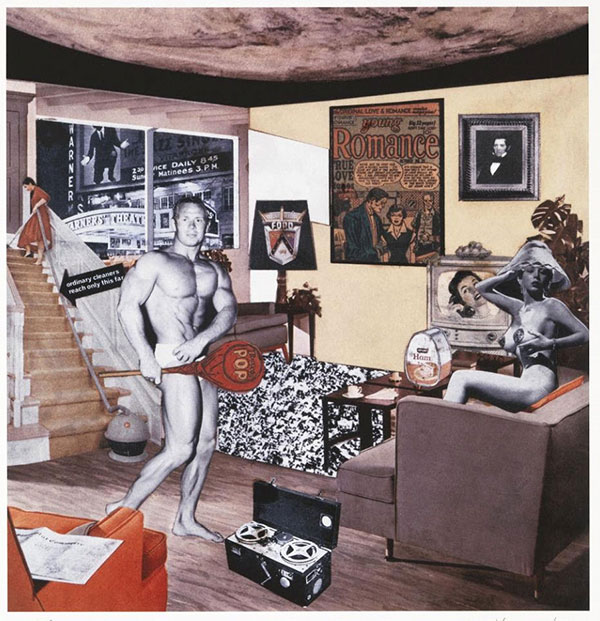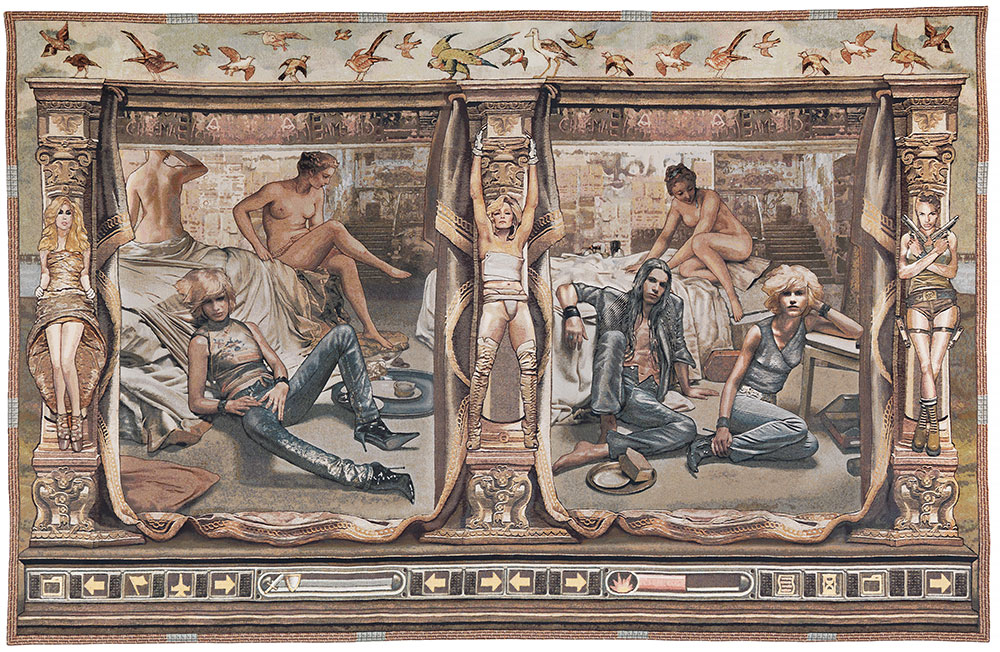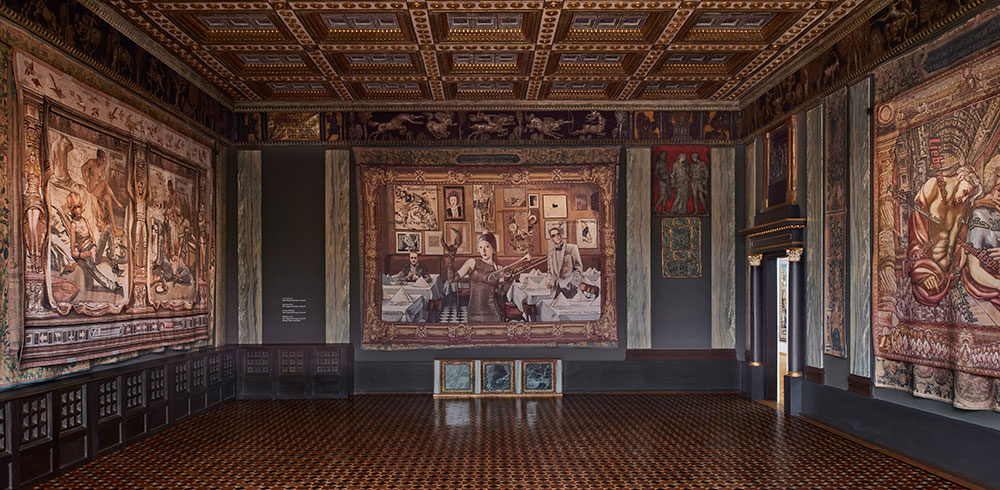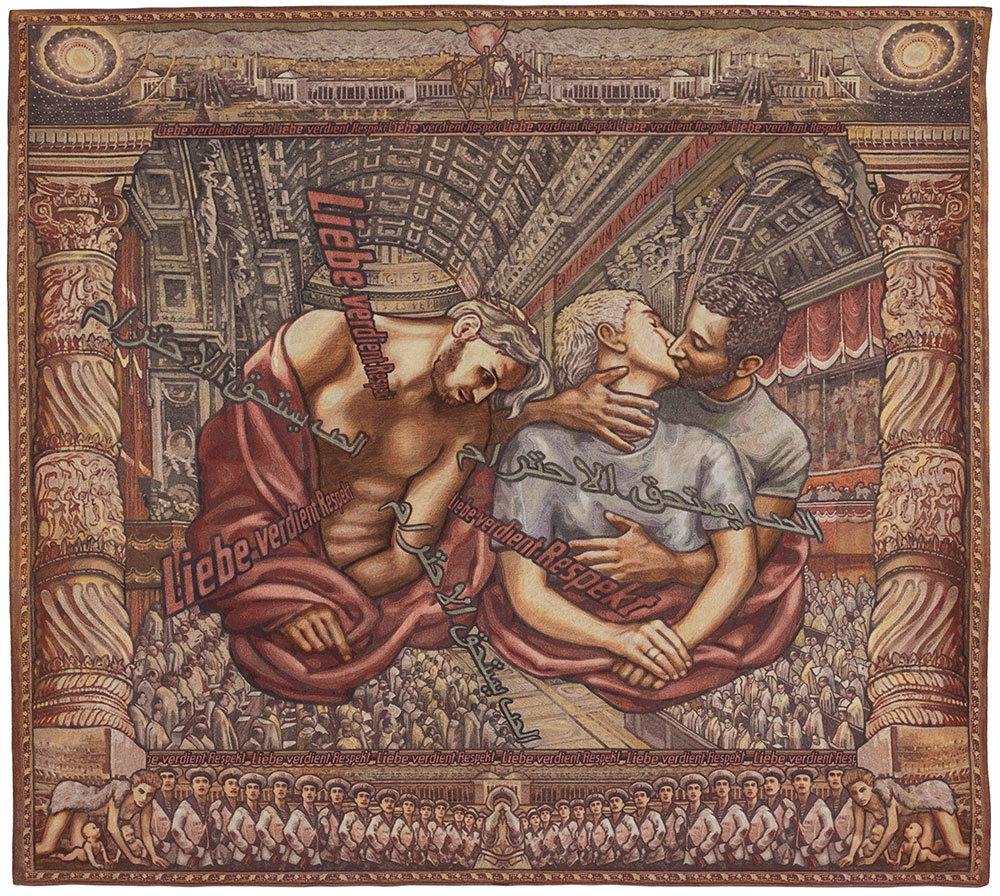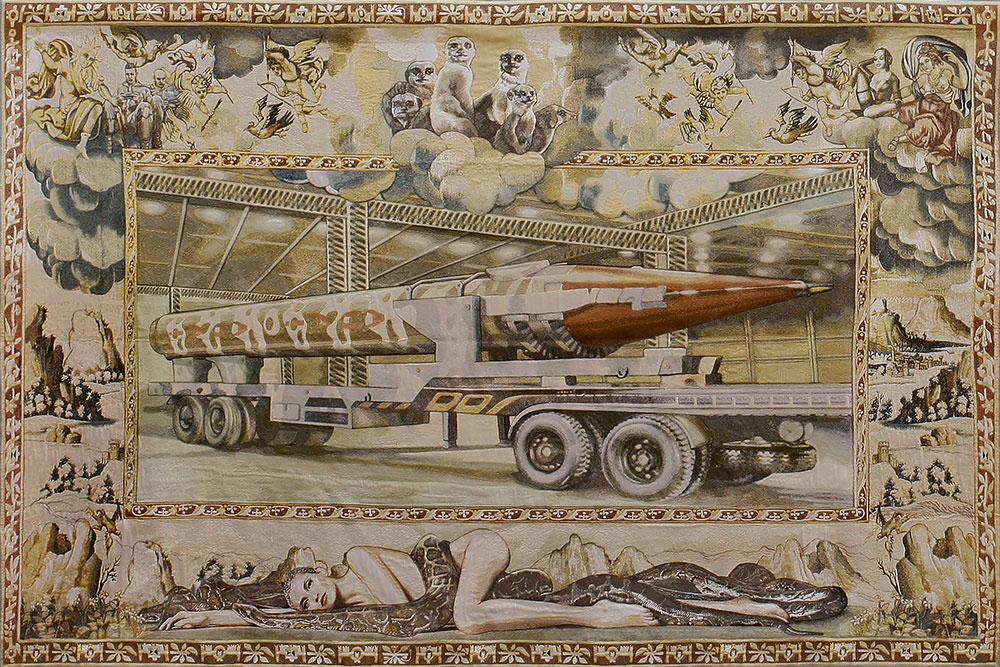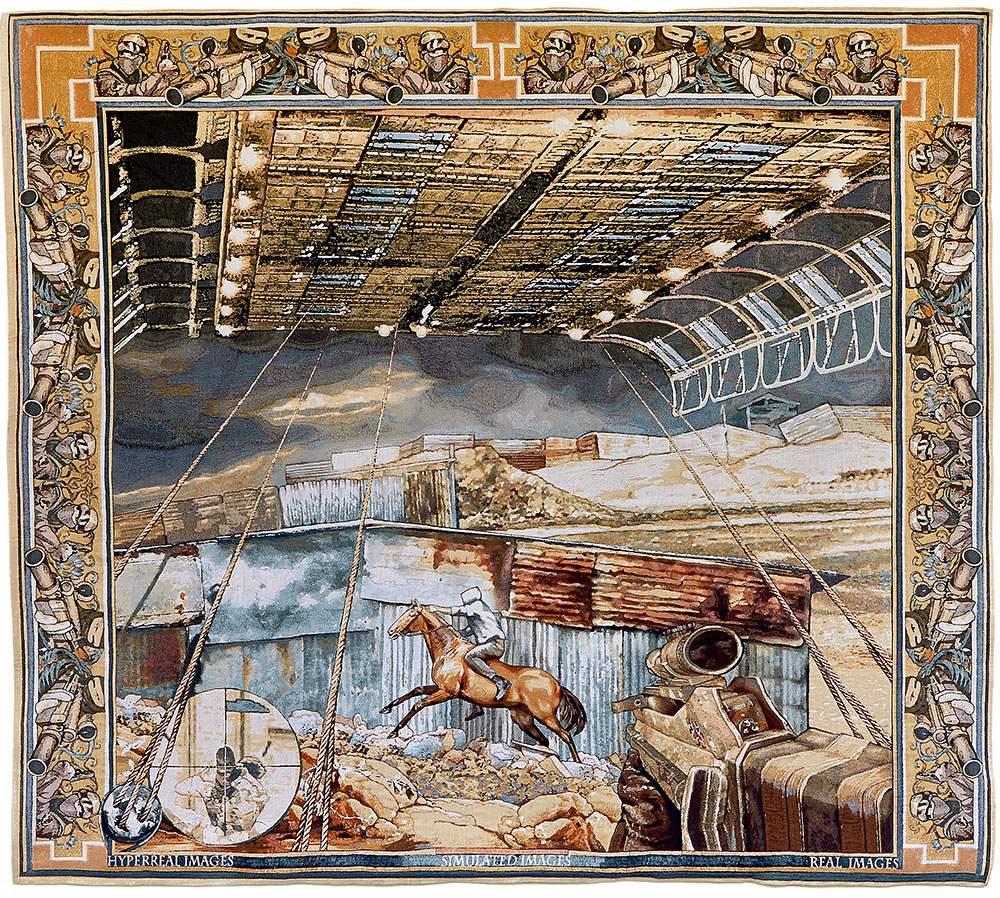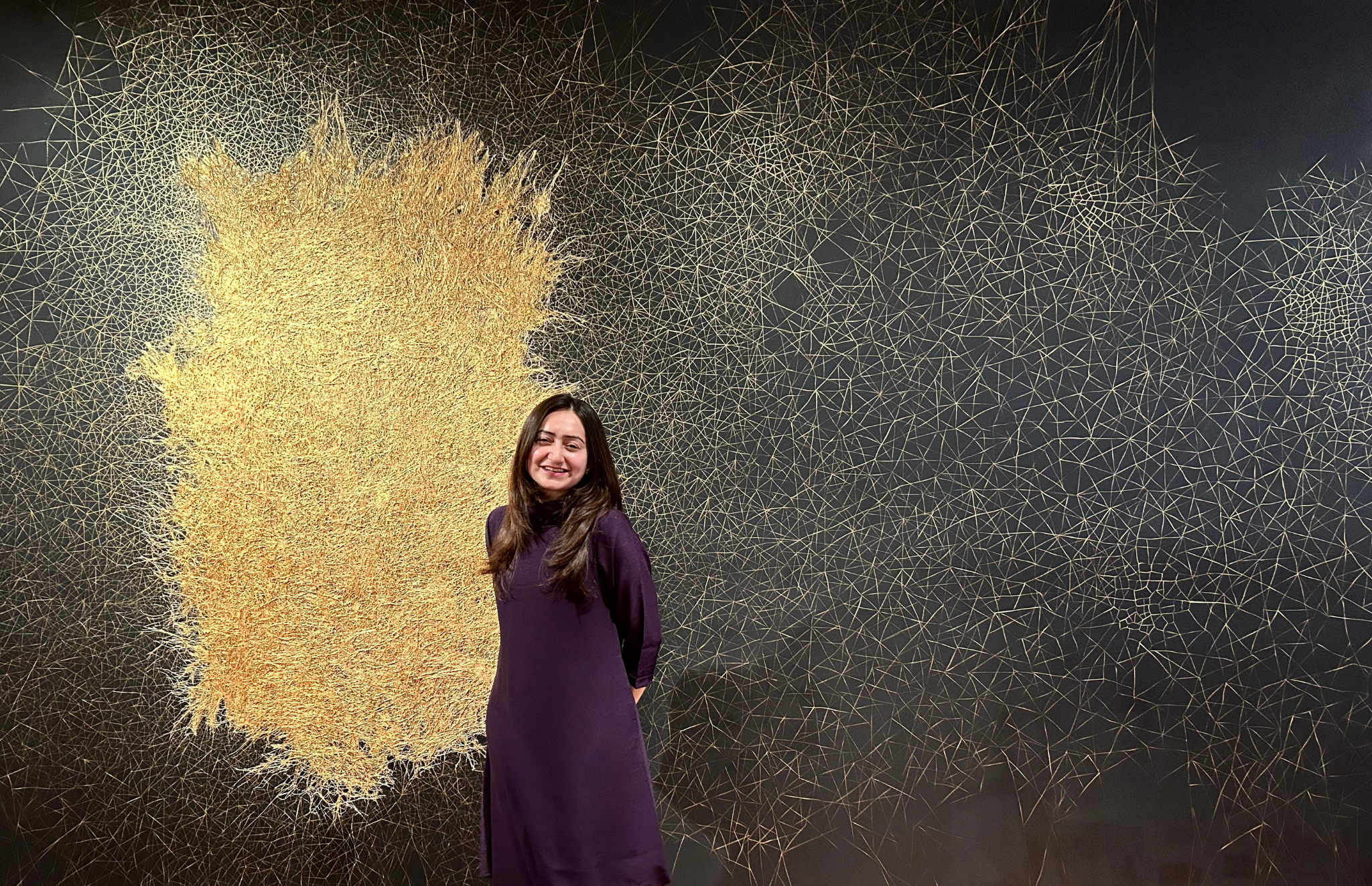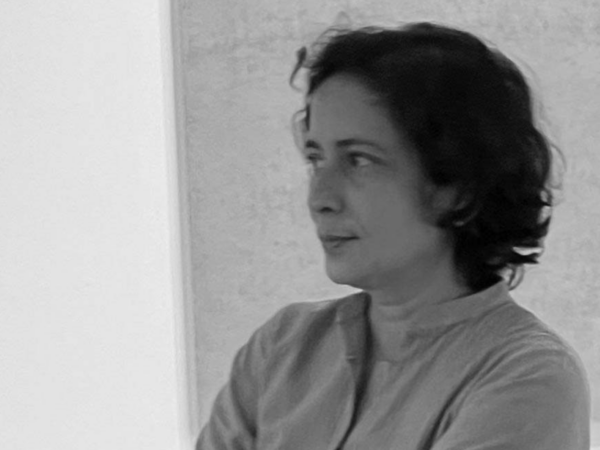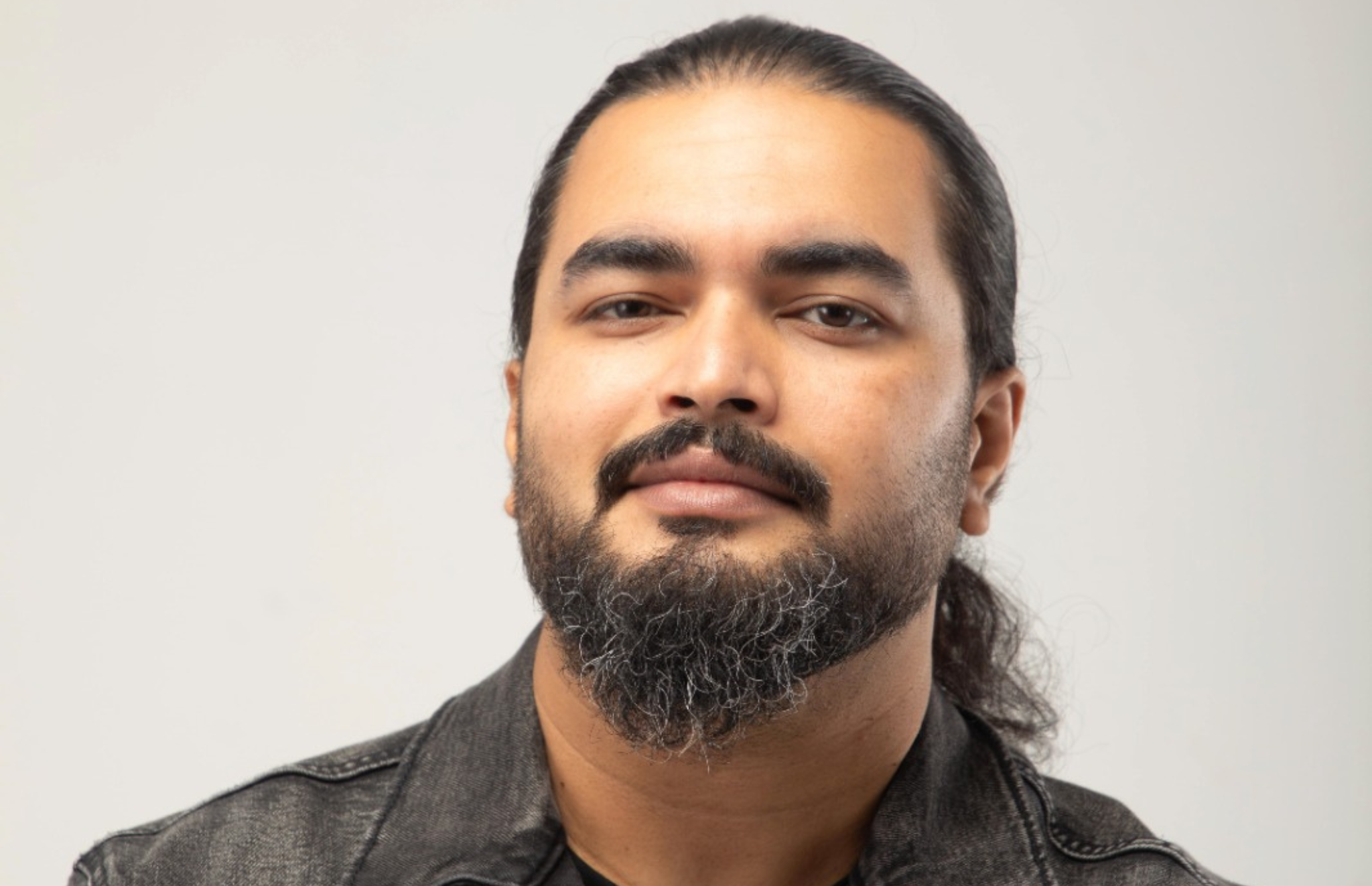Margret Eicher is a German Postwar & Contemporary artist who was born in 1955. Her work was featured in several exhibitions at key galleries and museums, including the Kunsthistorisches Museum, Vienna and theErarta Museum of Contemporary Art. In Mutual Art’s artist press archive, Margret Eicher is featured in The Work of Art in the Digital Age of Reproduction, a piece from the NY ARTS in 2008.
SP: Brief introduction and early academics
ME: 1973: Abitur, 1973-1979: Academy of Arts, Düsseldorf at Prof. Fritz Schwegler and Prof. Rolf Sackenheim, master student.
SP: Your works remind me of pop culture artists when it comes to their wit and execution. Where do you see pop culture in your art practice? Is there any influence?
ME: That’s right! I consider myself being an heiress of Pop Art. The postmodern strategy of quotation, recontextualization, and reinterpretation begins in this era. The strongest specific impulse for me was Richard Hamilton’s collage, just what is it that makes today’s homes so different, so appealing?”
SP: Where do you position yourself as an artist in contemporary times?
ME: As an artist I am particularly sensitive to the visual phenomena of the social andpolitical developments in our society. I want to interpret and visualize the hidden messages.
SP: What are the politics of your praxis?
ME: I am interested in the political and social strategies of power and manipulation of the images in mass media. My work is not based on my individual point of view, but on the perspective of the visual mass culture. The image collections of the Internet, the print media, fashion and political photography, film stills and computer games are the above mentioned, surfaces and patterns that reflect the spirit of our time.
SP: What is the role of texts that you use in your artworks?
ME: Most of my texts are quotations from Jean Baudrillard describing our present time as an age of simulation, which means a social state in which sign and reality become more and more indistinguishable.
According to Baudrillard, the signs have detached themselves from what they are designated for and have become referenceless. The character codes of modern cities, advertisements and the media only pretend to be decipherable messages. In reality however, they are an end in itselfmaintaining the whole social system, so that everyone remains in his place.
SP: What is the significance of the tapestries in your art practice?
ME: The pictorial frame of the tapestry I quote the courtly tapestry of the 17th and 18th century. These monumental woven images were culturally more valuable and socially influential than any other form of art in the Baroque era. In their themes and imposing appearance these courtly tapestries represented the power and ideology of a court. They could easily be moved and, for strategic reasons, were displayed wherever they could unfold their message to the maximum.
SP: Your work has an interesting amalgamation of tradition and contemporary. How do you connect the two?
ME: To me, it seems logical to revive this historical image of power with the help of contemporary media images, since dominance and appropriation for the enforcement of political interests is an essential function of modern communication media.
SP: What is the importance of the monumentality of your artworks?
ME: The large format is also part of the quote. The monumentality serves the described communication intentions. But I unveil and decodethis in ironic gestures or in Baudrillard quotations.
SP: Creating and producing such a monumental project involves a lot of hard work. I am interested to know how you perceive labour and work.
ME: My work is a lengthy procedure and finding motifs often work only by trial and error. In the process, insights into the subject emerge that sometimes did not exist before. I do a lot of research to back up the content of my collaged contexts. It’s all exciting and also entertaining. I experience my work as a play.
SP: Does your art practice involve labour? Or work? Is there any difference between them according to you?
ME: My work at the computer is conceptual and aligned to social debates, sub-cultural trends and media icons. The digital collages are the result of political reflection and position. The physical realization of my digital work happens in the machine implementation process of my weaving mill in Belgium.
The motifs of my tapestries flow from the internet into my computer, where they are combined and connected in a long process. After that they are sent to the digital working loom, which produces the final material appearance: rich in structure, sensual and haptic. The final result is often preceded by many tests.
In our long-standing collaboration, the weaver of my tapestries has become the first and most important interpreter of my digital data.
Image Courtesy: Artist
Find more about the artist
https://www.instagram.com/margret_eicher/?hl=en
https://michaeljanssen.gallery/blogs/news/margret-eicher-lob-der-malkunst

